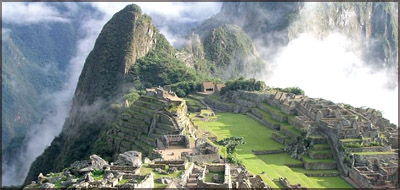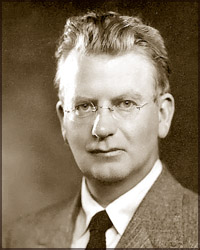|
CHILDREN
World Teachers’ Day on October 5

|
*****
Excellence is a better
teacher than mediocrity. The lessons of the ordinary are
everywhere. Truly profound and original insights are to be
found only in studying the exemplary.
- Warren G. Bennis
*****
Dear Children,
Did you all celebrate Universal Children’s
Day yesterday? I am sure you did in grand style. Let me
discuss about another important day in the calendar. That is
World Teachers’ Day held annually on October 5. It is a
great opportunity for children to show love and affection to
them. Teachers play a very important role in children’s
life. Children should give due respect and venerate them
since teachers are considered second only to parents. It is
the day to show your gratitude to them. I am sure teachers
get the best satisfaction when they see their students doing
well in studies and sports, and are disciplined. Students
should get the blessings of their teachers.
According to UNESCO, World Teachers’ Day
represents a significant token of the awareness,
understanding and appreciation displayed for the vital
contribution that teachers make to education and
development.
Education International (the global union
federation that represents education professionals
worldwide) strongly believes that World Teachers’ Day should
be internationally recognised and celebrated around the
world. Over 100 countries observe World Teachers’ Day. Good
luck for all your activities on Teachers’ Day.
- Aunt Anji |
Machu Picchu
(1460-1470), Peru
 Today we feature the seventh(last) in our series of Modern Seven
Wonders of the world. We have already featured the Great Wall of China,
the Taj Mahal, the Roman Colosseum, Chichen Itza Pyramid in Mexico,
Petra in Jordan and Christ the Redeemer. Today we feature the seventh(last) in our series of Modern Seven
Wonders of the world. We have already featured the Great Wall of China,
the Taj Mahal, the Roman Colosseum, Chichen Itza Pyramid in Mexico,
Petra in Jordan and Christ the Redeemer.
Machu Picchu is a pre-Columbian Inca site located 2,400 meters (7,875
ft) above sea level. It is situated on a mountain ridge above the
Urubamba Valley in Peru, which is 80 km (50 mi) northwest of Cusco and
through which the Urubamba River flows.
The river is a partially navigable headwater of the Amazon River.
Often referred to as ‘The Lost City of the Incas’, Machu Picchu probably
is the most familiar symbol of the Inca Empire. It is also one of the
New Seven Wonders of the World.
It was built around 1460, but abandoned as an official site for the
Inca rulers a hundred years later, at the time of the Spanish conquest
of the Inca Empire.
Although known locally, it was said to have been forgotten for
centuries when the site was brought to worldwide attention in 1911 by
Hiram Bingham, an American historian. Since then, Machu Picchu has
become an important tourist attraction. It has recently come to light
that the site may have been discovered and plundered several years
previously, in 1867 by a German businessman, Augusto Berns.
Machu Picchu was declared a Peruvian Historical Sanctuary in 1981 and
a UNESCO World Heritage Site in 1983. Since it was not plundered by the
Spanish when they conquered the Incas, it is especially important as a
cultural site and it is considered a sacred place.
Machu Picchu was built in the classical Inca style, with polished
dry-stone walls. Its primary buildings are the Intihuatana, the Temple
of the Sun, and the Room of the Three Windows. These are located in what
is known by archaeologists as the Sacred District of Machu Picchu.
Currently, there are concerns about the effect of tourism on the site as
it reached 400,000 visitors in 2003.
Watching over stones - Part 6
By Uncle Sachi and Aunt Ruwi
 The kids watched in growing horror as Uncle Sachi lifted his cane.
When the tip of the cane is hooked securely on the stone, the gnome gave
a grunt of satisfaction and started pulling. Chinthaka felt the slight
sensation of the stone about to give way but suddenly it seemed to
realise what was happening and clung on for dear life. The kids watched in growing horror as Uncle Sachi lifted his cane.
When the tip of the cane is hooked securely on the stone, the gnome gave
a grunt of satisfaction and started pulling. Chinthaka felt the slight
sensation of the stone about to give way but suddenly it seemed to
realise what was happening and clung on for dear life.

After a few minutes’ struggle, Uncle Sachi paused to take a blue
handkerchief out of his coat pocket and rubbed off the sweat from his
brow.
“If you fellas don’t mind, I sure can use a hand....,” he informed
the kids who stood staring at him.
Then he raised his voice again.
“Ahoy, there Ruwi... Old Matilda did not caste her spells to take
them off easily. I’m sure some of your pixie magic can do wonders right
now.”
There was a moment of silence and a small sigh. A dainty looking
creature fluttered down from the tree tops. One close look and
Champika’s jaws dropped in surprise.
“Why she looks like a fairy in the Grimm’s fairy Tales,” she
whispered, tugging at her brother’s sleeve. Pramodaka blinked. Indeed
the creature looked much like a fairy. She was dressed in a long, red
dress with slippers to match. She had long, silky curls which were
plaited to reach well below her waist, pointed ears and she wore a cap
which resembled a leaf, tuck around her head. Her wings which sprouted
from her shoulders, filled the air with a soft fluttering sound
reminding him of the young sparrow which the children had owned several
years ago.
“Really Sachi! I think you have enough experience casting spells off
by now,” Ruwi, the pixie said.
“Every week one or two of us keep watch over the stones. Most of the
folk who fall into the trap repent over their mistakes. We caught a
bear, an iguana and a chimp already this month and the date is still
October 2,” she told the children.
“And they were all sent there by that evil goblin, Sulo,” Sachi added
in disgust. “Now are you all going to help me finish this job? Come on
now. We haven’t got all day.”
“Oh, certainly,” muttered Pramodaka, coming back to his senses.
“Uncle... er- Sachi what do you want us to do?”
“Well for a start you can grab onto me and help me pull this damned
stone off your brother’s hand. What do you say, Ruwi? Got any better
ideas?”
“I don’t think that method will work Sachi, as the stones have never
lured in something as big as a human before. Why don’t I go and fetch
Matilda’s book of un-casting spells from Maggi, her niece.
“The only problem is the book is too big for me to carry. The place
is not far, so why don’t one of you kids come and help me?” Ruwi asked,
focusing her bright eyes on the eldest child of the group.
Where will Aunt Ruwi lead Pramodaka? You will discover it in part
seven of ‘Kids’ Den’.
International Children’s Day celebrations at Kingston College
International
 International Children’s Day was celebrated at Kingston College
International (Mutwal, Wellawatte, Mount Lavinia and Matale branches)
recently presided by Lion Dr. T. Kumaravel, Chairman of the College. International Children’s Day was celebrated at Kingston College
International (Mutwal, Wellawatte, Mount Lavinia and Matale branches)
recently presided by Lion Dr. T. Kumaravel, Chairman of the College.
In fact, children are the precious gifts one should have. It is up to
parents both the father and the mother to play an equal and immense role
in their lives. From the time of their infancy to adolescence and
teenage years, parents play a vital role in a child’s life.
Further, bringing up young children can be very enjoyable, although
tiring. Being a parent to children or even a teenager is always a
challenge. It is important to keep in mind that children go through
various stages in their lives. As a parent, the best thing is always
talk to them. While giving advice to the children, the parents also
should listen to them and consider seriously what they are saying.
Indeed, this will teach them to listen and be patient.
The parents should try to understand the children’s problems
seriously and at the same time set standards for their behaviours. What
the children learn at home will definitely influence them and make them
to treat others also accordingly. Undoubtedly, the Chairman, Principal,
teachers at Kingston College International lay strong emphasis on
achieving a high standard of discipline, conduct, punctuality,
attendance and behaviour. Further, the motto of the college is
upliftment of education, economy and society.
Poorani Sivaprakash, Kingston College International (Mutwal branch),
Vice-Principal of Primary section.
John Logie Baird inventor of television

John Logie Baird (August 13, 1888 - June 14, 1946) was a Scottish
engineer and inventor of the world’s first working television system.
Although Baird’s electro-mechanical system was eventually displaced
by purely electronic systems (such as those of Vladimir Zworykin and
Philo Farnsworth), his early successes demonstrating working television
broadcasts and his colour and cinema television work earn him a
prominent place in television’s invention.
Baird was born in Helensburgh, Argyll, Scotland.
He was educated at Larchfield Academy (now part of Lomond School),
Helensburgh; the Glasgow and West of Scotland Technical College (which
later became the University of Strathclyde); and the University of
Glasgow. |

